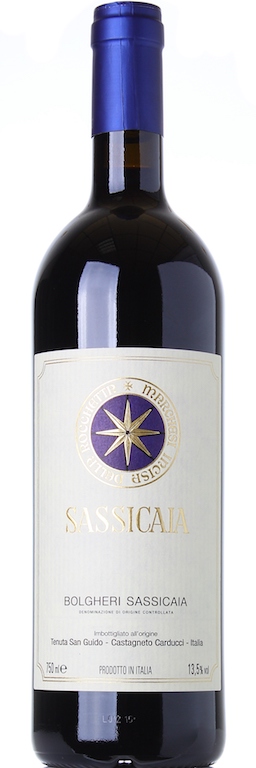Wine tours in Tuscany - About Angie - +39 3333185705 - angie.chianti@gmail.com
Have you ever heard of a wine called Sassicaia? It’s a Bolgheri wine, Denominazione di Origine Controllata produced at the Tenuta San Guido. It is also one of the most famous wines in the world! Sassicaia production began in the 1940’s, when the Marchese Mario Incisa della Rocchetta, an expert in French wines, imported Cabernet Sauvignon and Cabernet Franc grapes to Italy. He planted the vines at Tenuta San Guido, in the Maremma area of Livorno. In 1944 he produced the very first bottles of Sassicaia. At the time, it was only produced for the family to drink, due to regulations that tended to favor quantity over quality. The first year of commercial sale was 1968… and from then on Sassicaia has remained one of the world’s top tier Tuscan wines.
At the urging of friends and family after years of making the wine for his own consumption, the marchese decided in 1968 to put his product on the market. After realizing that the experimental wine aged quite nicely, he presented the market with a Premier Cru Bordolese. During the following years, the cantina was transformed into temperature-controlled rooms, with steel vats replacing the previous wooden vats, and french barriques being introduced for aging the wine.
Let’s learn a little more about where it comes from…
Nature Reserve
The Tenuta San Guido takes its name from San Guido della Gherardesca, who lived in the 13th century. It is located along the Tuscan coastline, in between Livorno and Grosseto, in an area known as Maremma. The Tenuta is more than just a wine production area, though. Tenuta San Guido is also a wildlife reserve, world-famous for bird watching in Tuscany! Fulco Pratesi, honorary president of the World Wildlife Federation (WWF) in Italy wrote in 1984, “In principio fu Bolgheri. Poi venne il WWF Italia.” “First there was Bolgheri. Then came the WWF Italy.”
In 1959, Mario Incisa della Rocchetta decided to transform his hunting lands, made up of 80 hectares of marsh surrounded by 440 hectares of forest, into the first private Italian wildlife reserve. Then, in 1966, WWF Italy was born, and they took over the management of the wildlife reserve portion of the estate. In 1977, the wildlife reserve of Bolgheri became identified as a “Zona Ramsar”, meaning a marshland with national importance, due to the high number of various species of aquatic birds, particularly at the end of winter and beginning of spring. The lands later became a part of the European Union’s “Natural Network 2000” as a “Site of Community Importance – SIC”, giving it preferential status at the European level for special protection and funding for conservation and preservation. The lands are today one of Tuscany’s most important natural park lands.
And of course, horses!
Razza Dormello-Olgiata thoroughbred studfarm
The Tenuta San Guido also houses a thoroughbred studfarm, where the famed horse breed Dormello-Olgiata horses are bred and raised. Horses bred on the property were world-famous for racing throughout Europe in the early 1900s. One such horse, named Botticelli, won the Gold Cup at Ascot in 1955. Another horse from the property was Ribot. Unbeaten in 16 races, this horse won titles in the United Kingdom and France. Ribot was even named Italian Athlete of the Year by the Gazzetta dello Sport, an Italian sports publication.
So, the Tenuta San Guido is more than just an incredible wine producing estate. Tenuta San Guido produces olive oil too, and the family’s passions have led them to engage in nature preservation and horse breeding as well! You can visit the estate, the vineyards, the breeding grounds and the nature preservation with advance notice. The Tenuta San Guido is Tuscan quality at its finest.





